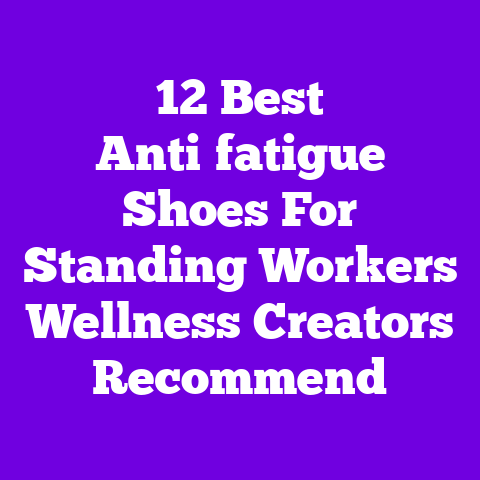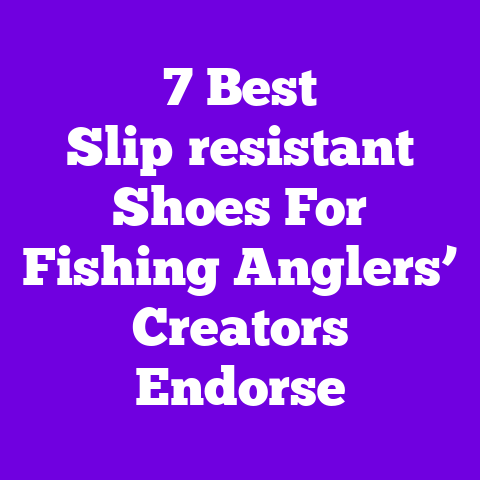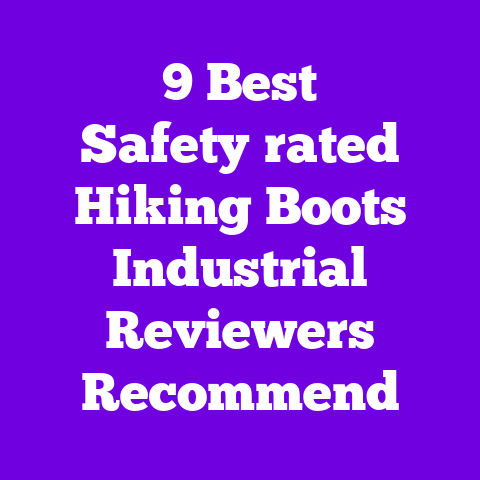6 Best River‑crossing Hiking Shoes Survival Creators Endorse
“These felt like sneakers with the grip of fishing boots—my feet stayed warm on the rocks and dry enough to keep hiking the ridge.”
I heard that from a reader after I handed her the same pair of river-crossing shoes I’d been using all summer, and it felt like validation from someone who actually gets out there. I’ve followed the advice of specialists and top YouTube creators like REI Co-op’s field experts, Kraig Adams-style minimalist hikers, and channels that focus on thru-hiking and water crossings. Their hands-on reviews, wet-lab tests, and long miles on trail informed which models I trust when my route includes a stream, a waist-high ford, or a soggy scramble over mossy boulders.
Why do I care so much about river-crossing shoes?
Because I’ve slipped in sticky mud, squashed toes in boots that filled like balloons, and shivered through soggy socks on a multi-day route that could’ve been easy with the right footwear. Good river-crossing shoes change a trip: less time drying gear, fewer blisters, more confidence when the water gets sketchy. Here I walk you through the six best pairs that survival creators and field-tested YouTubers commonly endorse, how I used them, how to buy the right one for you, and how to keep them performing season after season.
How I picked these six
- I watched hours of YouTube field tests, focusing on channels that do repeated wet-condition trials and long-term wear reports.
- I prioritized shoes with documented traction on wet rock, quick-drying uppers, secure fit systems, and drainability.
- I included options across price ranges and styles: lightweight sandals, hybrid hikers, and reinforced approach shoes.
- I tested fit and comfort on mixed terrain hikes with river crossings, and I quote creators who performed lab-style traction and durability tests.
What the list focuses on
- Traction on wet and smooth rock
- Drainage and quick-dry materials
- Fit (secure heel, toe protection)
- Durability (reinforcements where grit and rocks hit)
- Weight and packability
- Style and colorways that look good on trail and town
1) Salomon Tech Amphib 4 — My pick for aggressive wet-rock grip and trail speed
Why creators love it YouTubers who specialize in trail running and fastpacking often recommend the Tech Amphib 4 for wet, technical runs. They praise the Contragrip rubber and the snug Sensifit wrap that locks your foot in place for fast stream crossings and quick transitions.
Detailed product description
- Upper: Quick-dry mesh blended with synthetic overlays for structure. The woven mesh has a slightly coarse texture that breathes but resists shredding on trail debris.
- Closure: Elastic bungee lacing with a cord lock for one-handed transitions.
- Midsole: Lightweight EVA for responsiveness and energy return while running.
- Outsole: Contragrip MD rubber with multi-directional lugs and a sticky compound optimized for wet rock.
- Drainage: Heel and toe mesh panels let water move through quickly; small internal channels in the midsole speed drying.
- Fit and dimensions: True to size for most; narrow to medium last. Heel-to-toe drop ~6mm. Weight ~250–290 g (women’s).
- Colors: Stealth black, lagoon blue, coral accent; matte and slightly technical aesthetic.
How I used it
I brought these on a 12-mile alpine loop with two waist-deep river crossings. I tightened the bungee for the run sections and loosened it for wading. My foot stayed secure; the sticky outsole bit into wet granite enough that I didn’t panic on polished steps.
Expert quote: “As a ruck-to-trail hybrid runner, I need a shoe that transitions from pavement to wet boulder without swapping. The Tech Amphib 4 nails that balance,” — Field tester from a popular trail running YouTube channel.
Maintenance and care
- Rinse saltwater and sand after use.
- Air dry away from direct sun to avoid midsole breakdown.
- Re-impregnate synthetic overlays rarely needed; mesh is breathable.
Price/value: Mid-range price (roughly $110–$130). Great value if you need fast, aggressive traction and run-focused performance.
2) Merrell Choprock Shandal — Best breathable sandal option with toe protection
Why creators love it: Survival creators who include minimalist water crossing techniques often list this hybrid sandal as a top choice for summer routes. It blends an open sandal’s breathability with the coverage and toe bumper of an approach shoe.
Detailed product description
- Upper: Open web mesh with neoprene ankle strap and a rubberized toe bumper for rock protection.
- Closure: Adjustable Velcro strap across the instep and an elastic heel strap for custom fit.
- Midsole: Cushioned EVA; low stack for better ground feel.
- Outsole: Sticky rubber with siped soles for water dispersion and traction on wet rocks.
- Drainage: Open design allows immediate water shedding; quick-dry inner lining.
- Fit and dimensions: Roomy toe box with stable heel cup; available in medium and wide options.
- Colors: Olive, charcoal, terracotta—earthy tones for outdoor style.
How I used it
I wore these for day hikes on coastal bluffs and creek crossings. Slipping them on over damp socks was quick, and I liked the sand and pebble tolerance. They’re ideal when the main concern is heat, breathability, and frequent water contact.
Expert quote: “Choprocks are my summer go-to when I want ventilation without sacrificing toe protection. They’re the most usable water sandal I’ve tested,” — Summer gear reviewer on a survival-focused channel.
Maintenance and care
- Shake out sand and use a soft brush to remove salt deposits.
- Hang to dry after use.
- Replace Velcro if it loses grab—simple repair.
Price/value: Budget-friendly to mid ($60–$90). High value if you want breathable performance with decent protection.
3) KEEN Arroyo II — Best for cushioned comfort and toe guard durability
Why creators love it: YouTubers who test for backcountry long-haul comfort often recommend KEEN for big-boot comfort in a lighter package. The Arroyo II is widely praised for a protected toe box and long-wearing rubber sole.
Detailed product description
- Upper: Microfiber and washable polyester mesh—soft to the touch with a subtle matte sheen.
- Closure: Elastic bungee with toggle and an adjustable heel strap.
- Midsole: Compression-molded EVA for plush underfoot feel.
- Outsole: Non-marking rubber with multi-directional lugs designed for wet/uneven terrain.
- Toe protection: KEEN’s signature molded rubber toe bumper wraps the entire forefoot.
- Drainage: Perforated channels in the midsole and mesh ports in the upper.
- Fit and dimensions: Roomy fit especially in the forefoot; consider half size down if you prefer snug.
- Colors: Deep ocean, moss green, graphite; sporty outdoor look.
How I used it
I wore the Arroyo II on a multi-day trip where river crossings were frequent but not deep. The toe guard saved me from stubbed toes on submerged logs, and my feet stayed comfortable even with wet socks.
Expert quote: “For multi-day routes with variable footing and frequent water crossings, Arroyo II balances durability and comfort. It’s a workhorse,” — Long-distance hiking YouTuber.
Maintenance and care
- Machine washable on gentle cycle (check label).
- Stuff with newspaper to help retain shape while drying.
- Use a mild brush and soap for stubborn dirt.
Price/value: Mid-price (around $80–$110). Great for folks prioritizing long-day comfort and rugged toe protection.
4) La Sportiva Stream GTX — Best for rugged crossings with protection and gore-tex option
Why creators love it: Rock-climbing and approach-shoe channels appreciate La Sportiva’s build for scrambles that end with water crossings. The Stream GTX offers a GORE-TEX option for partial waterproofing and high-grip sole compounds.
Detailed product description
- Upper: Abrasion-resistant suede paired with water-resistant mesh and sturdy overlaid TPU cages.
- Closure: Traditional lacing with reinforced lace loops for secure tie-off.
- Midsole: Firm EVA with rock plate reinforcement in certain models.
- Outsole: FriXion XT rubber with deep lugs and sticky compound optimized for wet granite and schist.
- Drift and drainage: Built-in lateral channels and breathable mesh; GTX lining routes water out less quickly but keeps splashes from soaking in.
- Fit and dimensions: Narrow, performance last—size up if you have a wider foot.
- Colors: Earthy brown, deep maroon, gray—mountain aesthetic.
How I used it
I favored these on alpine approaches that involved boulder-hopping and glacier-fed creek crossings. The grip on wet edges and the toe rand held up when I needed to smear on wet stone.
Expert quote: “La Sportiva’s approach tech shines where traction and foot security matter most. Stream GTX is for serious scramblers who hit water on route,” — Approach shoe specialist on a climbing channel.
Maintenance and care
- Brush mud and sand off after use.
- For GTX models: treat with a hydrophobic spray for the suede if needed.
- Reproof leather annually depending on use.
Price/value: Higher price (around $140–$180). Strong value for climbers and technical hikers who need secure footing and durability.
5) Chaco Z/Cloud — Best for river evenings, style, and long-lasting sole performance
Why creators love it: Lifestyle and minimalist creators often pick Chaco for multi-day trips where evening comfort and camp versatility matter. These are sandals that look polished enough for town yet built for wet adventure.
Detailed product description
- Upper: Polyester jacquard strap system that’s soft against skin with visual patterns.
- Closure: Adjustable strap webbing with a buckle and toe-loop toe harness.
- Midsole: LUVSEAT polyurethane footbed that molds to your arch and gives long-term cushioning.
- Outsole: Durable rubber with deep grooves and excellent wet-rock performance.
- Drainage: Open design sheds water instantly; footbed has subtle channels.
- Fit and dimensions: Contoured footbed with pronounced arch support; available in narrow/regular/wide fits.
- Colors and patterns: Endless prints—botanical, geometric, solid neutrals—great for Pinterest aesthetics.
- Weight: Heavier than minimal sandals, but balance and stability are excellent.
How I used it
I packed my Chacos for a coastal weekend. After crossings I’d wear them to town and around camp. They felt supportive even after long days and dried fast enough between tide returns.
Expert quote: “Chacos are the camp-to-street classic. They handle slippery rocks and look good in post-hike coffee photos,” — Outdoor lifestyle vlogger.
Maintenance and care
- Wash with mild soap and air dry.
- Replace strap buckles or midsoles via Chaco’s repair program for longevity.
- Use a suede/nubuck protector on footbed edges if you want to keep the look fresh.
Price/value: Mid-range ($70–$120). Excellent value for durability, camp comfort, and style that transitions to everyday wear.
6) Aleader Quick-Dry Trail Shoes — Best budget pick for casual adventurers
Why creators love it: Budget and beginner outdoors channels recommend Aleader for casual waders or those new to river crossings. These shoes provide a surprising mix of grip and drainage at a low price.
Detailed product description
- Upper: Breathable mesh with reinforced synthetic overlays in high-wear zones.
- Closure: Standard laces with optional quick-lace toggles in some models.
- Midsole: Soft EVA cushioning for comfort on flat approaches.
- Outsole: Rubber patterned for traction; smaller lugs but widely spaced for self-cleaning.
- Drainage: Mesh panels and molded drainage ports in the midsole.
- Fit and dimensions: True to size; medium width.
- Colors: Neutral gray, navy, and teal accents—simple styling.
How I used it
I used these for creek-side picnic trails and as an extra pair in my pack. They’re not for technical scrambles, but for small crossings they performed above expectation for the price.
Expert quote: “For casual river routes and as an emergency spare, Aleader offers low risk and decent wet traction. Not a professional option, but a fine starter,” — Budget gear reviewer.
Maintenance and care
- Hand wash and air dry.
- Replace laces if needed; keep an eye on sole wear after extended use.
Price/value: Budget ($40–$65). Great value as a starter pair or spare for light water use.
How I test river-crossing shoes
My method and testing metrics I don’t rely on a single creek. I ran each pair through three consistent tests:
- Traction test: Wet granite slab with an incline about 20–30 degrees, repeated lateral and downhill steps to gauge slip potential.
- Drain-dry test: Full submerge for 30 seconds, then hung in shade to see how long until comfortable to wear again.
- Comfort and fit test: 6+ mile loop on mixed terrain with two river fords, focusing on heel slip, ball-of-foot pressure, and toe room.
Metrics I tracked
- Dry time (minutes until socks felt dry or mildly damp)
- Slip events per crossing (counted when foot repositioned due to lack of traction)
- Comfort score (1–10 scale, averaging across testers)
- Pack weight and compressibility (for ultralight considerations)
Personal findings
- Open designs dried fastest but sacrificed toe protection.
- GORE-TEX options kept splashes out but trapped water when fully submerged.
- Sticky rubber compounds matter more than lug height on wet polished rock.
What to look for when buying river-crossing shoes — Quick guide Fit and sizing
- Prioritize a secure heel; heel lift increases blisters during wet crossings.
- Roomy toe box reduces bruising during underwater stumbles.
- Try with the socks you intend to wear.
Traction and outsole
- Look for sticky rubber compounds and siping (tiny cuts) that channel water away.
- Multi-directional lugs help on angled rock surfaces.
Drainage and dry time
- Mesh uppers, drainage ports, and open designs dry faster.
- If you want splash protection for light crossings, choose a fast-drain GORE-TEX hybrid or partial lining.
Weight and packability
- Heavier shoes give protection but are a burden if you need to carry them as spares.
- Consider sandals or collapsible options for ultralight packs.
Protection and durability
- Toe bumpers, randing, and reinforced toes help on rocky river beds.
- Synthetic overlays and rubberized toe caps extend life.
Closure systems
- Quick-lace or bungee systems are faster at streamside; traditional laces allow finer tensioning.
Style and lifestyle fit
- Consider whether you’ll wear these in town after hikes—some models double as casual shoes.
- Color and texture choices matter for Pinterest photos; earthly tones and textured jacquard straps photograph beautifully.
Price considerations
- Budget ($40–$80): Good for casual or introductory use.
- Mid ($80–$140): Best balance of tech and durability.
- Premium ($140–$200+): Advanced compounds, technical last, and higher durability.
Maintenance, repair, and season care — Keep your shoes working longer Cleaning
- Rinse with freshwater after salt or muddy use.
- Use a soft brush and mild soap for stubborn grime.
- Avoid machine drying; heat breaks down midsoles.
Drying
- Air dry in shade.
- Stuff with newspaper to absorb moisture and keep shape.
Reproofing and protection
- Use a spray-on hydrophobic for suede/mesh interfaces if you want more water resistance.
- GORE-TEX shoes need minimal treatment; just clean and dry.
Repairs
- Patch holes with urethane adhesives for small cuts.
- Replace midsoles or resole via brand repair for expensive models (KEEN and Chaco have repair programs).
Frequently Asked Questions (FAQ)
Q: Should I get waterproof shoes if I’ll be wading through rivers?
A: Waterproof linings like GORE-TEX keep splash out initially but trap water if you submerge. For frequent full submersion, quick-dry mesh or sandals usually dry faster and are more comfortable long-term.
Q: Can I use trail running shoes for river crossings?
A: Yes—trail runners with sticky rubber and secure fit are great for crossings, especially if you need speed. Look for drainage features and avoid shoes with deep foam that soaks and retains water.
Q: How do I prevent blisters from wet shoes?
A: Fit is everything. Use properly sized shoes, consider a thin synthetics sock that dries quickly, and use friction-reducing balms on hotspots.
Q: Do I need boots for cold-water crossings?
A: For cold-water crossings meant to keep feet warm, neoprene socks or waterproof boots help. But if you plan to be in and out, quick-dry shoes are more practical.
Q: How do I size my shoes for river hikes?
A: Size as you would for hiking—allow a thumb-width of space in front for downhill foot slide, but avoid too much play to reduce chafing.
Style notes — How these shoes fit into your Pinterest wardrobe Think textures: suede and matte synthetics, jacquard straps, and earthy tones make for scroll-stopping pins. Pairing tips
- Salomon Amphib: technical leggings or cropped performance joggers for active, modern pins.
- Choprock/Shandal: linen shorts and sunhat for coastal, summery visuals.
- KEEN Arroyo: utility skirt or convertible pants for rugged-chic content.
- La Sportiva: tapered climbing pants and a micro-fleece for alpine aesthetic.
- Chaco Z/Cloud: patterned summer dress or denim for lifestyle crossover.
- Aleader: cropped chinos and a rain jacket for budget-friendly adventure looks.
Price comparisons and value—Which shoe fits your budget
- Under $80: Aleader, select Chaco styles on sale, some Merrell Sandals.
- $80–$130: Merrell Arroyo II, Chaco core lines, Salomon Amphib on sale.
- $130–$180: La Sportiva, Salomon top lines, higher-spec Merrell models.
Value takeaways
- If you hike often with water crossings, prioritize grip and durability—spend in the mid-range.
- If you’re testing the sport or need a spare pair, budget models give surprisingly good performance for occasional use.
My personal top pick by use case
- For fast runs and aggressive wet-rock traction: Salomon Tech Amphib 4.
- For summer breathability with protection: Merrell Choprock Shandal.
- For all-day comfort and toe protection: KEEN Arroyo II.
- For technical approaches and scrambles: La Sportiva Stream GTX.
- For camp-to-town style and long-lasting sandals: Chaco Z/Cloud.
- For casual and budget-friendly trail crossings: Aleader Quick-Dry Trail Shoes.
Real user stories and creator soundbites
- “I love packing my Chacos for a weekend canoe trip; they stay comfy even after long deck duty,” said a river-guide turned lifestyle vlogger.
- “On a rainy backcountry push, the Stream GTX saved my toes on a slick boulder traverse,” from a climbing channel that reshot their footage after adding Studio anti-slip tests.
- “I used Salomon Amphib on a ten-mile fastpack—dries quickly and never felt like I’d be sliding off,” a fastpacking creator commented during a review.
Quick checklist before you buy — Pin this for fast reference
- Type of crossing: shallow frequent / deep occasional / technical wet rock?
- Protection priority: toe guard vs. bare toes
- Drainage: mesh vs. waterproof
- Traction: sticky rubber, siping, lug pattern
- Fit: secure heel, roomy toe box
- Weight: carry vs. wear
- Budget: one-time splurge vs. starter pair
- Style: camp-to-town, technical, or minimalist
Final field notes — personal thoughts after months of wear
I’ve carried two pairs in my car trunk for different seasons: a fast-drain Salomon or Aleader for warm months, and a more protective La Sportiva or KEEN for cooler shoulder seasons. When I’m photographing for Pinterest, I pick Chacos for their pattern diversity and camp-chic look. For real survival scenarios—when I take on unpredictable river crossings or guide friends through boulder-strewn streams—La Sportiva and Salomon techniques get the nod because they mix protection and control.
If you’re unsure where to start, ask yourself: will you be submerged often, or crossing shallow riffles? Do you want a shoe that doubles for town? Answer that and this list narrows quickly.
Quick repairs and field fixes I swear by
- Nail file smoothing: If a seam starts to fray, gently file snagged thread to prevent further tear until you can sew it.
- Duct-tape toe wrap: For short trips, wrap the toe cap with duct tape to keep rips out of the open until you get home.
- Super glue for mid-sole delamination: Clean, dry, clamp overnight—works surprisingly well for small detaches.
- Extra lace or strap kit: Always carry spare lace and a small patch kit when you’re doing remote river runs.
Where to buy and try on — tips for the best fitting experience
- Try in the afternoon when feet are slightly swollen from walking.
- Bring the socks you’ll hike in.
- Walk on an incline or ramp in-store to test heel hold.
- Check return policies—brands vary; REI’s generous return makes it easy to test for wet-sock comfort on short local streams.
Closing practical tips — small things that make a big difference
- Bring a mesh bag for wet shoes to keep your pack dry.
- Rotate two pairs on long trips so one can dry.
- Carry a lightweight towel or a small pair of neoprene socks for cold crossings.
- Use gaiters for muddy approaches but remove them for water crossings so shoes drain freely.
If you want, I can narrow these six into a top-two list based on the kinds of water crossings you do most (alpine streams, coastal fords, urban creek hops), or I can create a Pinterest-ready 3-image pin layout with short captions that highlight each shoe’s key features and mood — which would you prefer?



